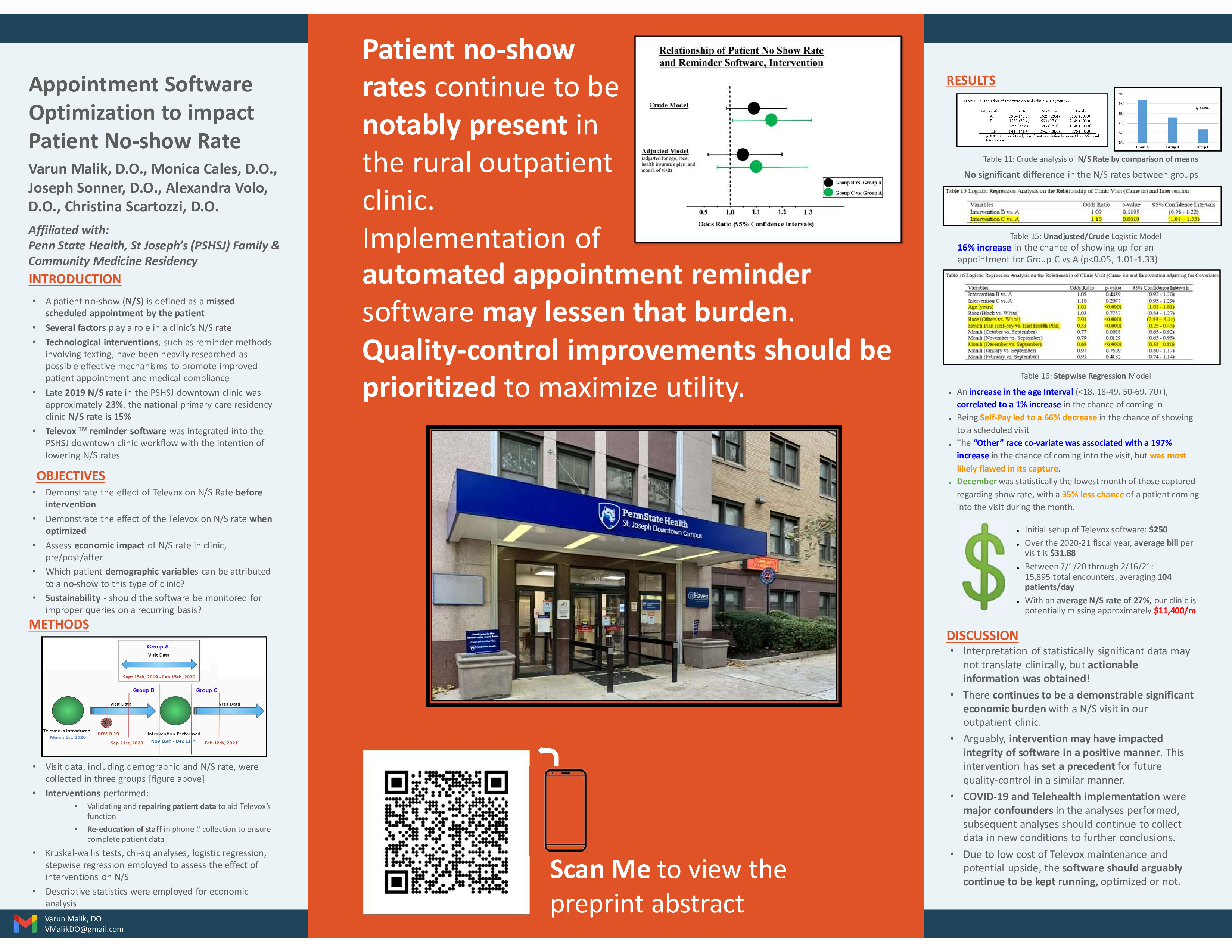PCR041: Optimizing appointment reminder software to reduce the no-show rate in a rural outpatient setting
Varun Malik, DO; Monica Cales, DO; Alexandra Volo, DO; Joseph Sonner, DO; Christina Scartozzi, DO
Abstract
Context: Patient no show (N/S) rates in the outpatient setting have a large effect on healthcare systems nationwide. The use of technology, such as scheduling-reminder software, has been used to curb the N/S rate in many settings. There remains a paucity of data in both the effectiveness of such software and the demographic factors contributing to the N/S rate. Objective: Analyze the effects of TelevoxTM software optimization on N/S rate. Study Design: Prospective cohort study. Setting: Family Medicine residency practice site located in downtown of a small city (population 50,000). Population Studied: All scheduled patients who had an appointment scheduled at least 24 hours prior. Intervention: Prospective patient chart data modified for one month, ensuring updated fields in contact information, decreasing number of uncontacted patients. Patients were provided education regarding TelevoxTM system at the end of each appointment. Outcome Measures: Primary: The comparison of N/S rates from: when TelevoxTM was NOT Launched, after TelevoxTM was launched, and after our intervention. Secondary: the effect of a covariate on N/S probability; economic impact of N/S to our clinic. Results: Crude modeling shows a significant (16%) increase in a patient showing for visit [OR 1.16, p=.0310] after the intervention; this is not apparent after the launch of the software, but before intervention group [OR 1.09, p=.1195]. Age showed significance in the adjusted model – with a 1% increase in chance of showing for a visit correlating to a 1-year increase in age. Being an uninsured patient led to a 66% decrease in the chance of showing. December was statistically the lowest month of those captured regarding show rate. At an average captured N/S rate of 27%, our clinic missed an average of $11,400.00 of billable funds a month. Conclusions: N/S rates may have decreased significantly by our optimization of TelevoxTM software, but data was marred by many confounders, such as the COVID-19 pandemic and shift to incorporate telehealth visits. Covariate data emphasizes disparity of self-pay patients. Adjusted modeling did not show a significant change in N/S rate, speaking to the need for further prospective datasets. Economic analyses reiterate burden of N/S visits on ambulatory clinics.

Jack Westfall
jwestfall@aafp.org 11/20/2021This is a great topic and research study. and terrific poster with the center impact panel. Nice work. Thanks